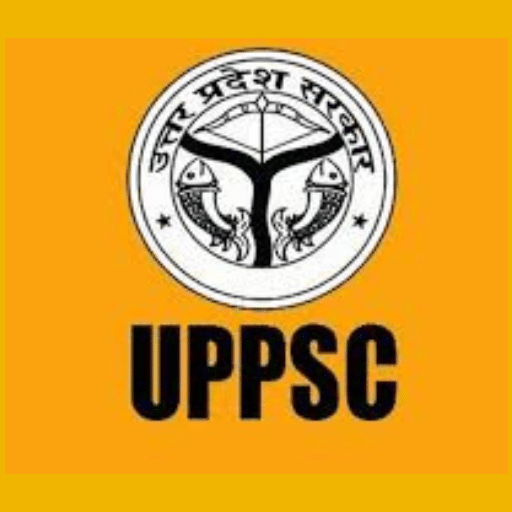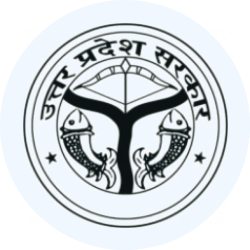Mass Communication and Social Change - Essay, UPSC MAINS | Course for UPPSC Preparation - UPPSC (UP) PDF Download
Mass Communication and Social Change
structure
(1) Opening — Quote Gandhi.
— Historical facts.
(2) Body — Media of communication and colonial masters.
— The changes which have followed since the expansion in the communication media in India.
— Role of politicians, bureauc-rats and press.
— Mass communication in pre-independence day.
— Electronic media and the society.
— Problems of mass-media.
— All pervasive influence of television.
— Domination of electronic media.
— Instrument of change and immediate relevance.
(3) Closing — Cultural syncretism between the value systems of tradition and modernity.
"One of the objects of newspaper is to understand the popular feeling and give expression to it; another is to arouse among the people certain desirable sentiments; and the third is fearlessly to expose popular defects".
— M.K. Gandhi
Historically, social structure and tradition in India remained impervious to major elements of modernity until the contact with the west began through colonization. This contact had a special historicity which brought about many far-reaching changes in culture and social structure of Indian society. There was, however, one important feature of Indian modernization during the British period. The growth of this process was selective and segmental. It was not integrated with the micro-structures of Indian society, such as family, caste, village community. At these levels, the British by and large followed a policy of least interference, especially after the rebellion of 1857. Later, in the twentieth century, as the nationalist movement gathered momentum which felt strong need to mobilize masses in the active policies. The press became the chief instrument for carrying out the task, that is for arousing, training, mobilizing and consolidating nationalist public opinion. The influence of the media on Indian masses was tremendous. It not only educated the masses politically, but also motivated them to discard irrational, old and evil social practices.
The media of communication which have accelerated the rate of growth and cultural diffusion of modernization have also been introduced in India by the colonial masters. Printing was introduced by the Portuguese in the second half of the sixteenth century and incentive for this was provided by the Christian missionaries. In the British territory, the first press appeared in Bombay in 1674 on the initiative of an Indian named Bhimji Parekh. In early eighteenth century a printing press was established in South India by the Danish Lutheran Mission. Written newspapers called Akbar are known to have been in circulation during the time of the Mughal empire, but the printed newspapers came into existence only after the contact with the west. A beginning in this direction was made about the first quarter of the 18th century. Similarly, the British also introduced telegraph, railways and modern postal system in India.
The changes which have followed since the expansion in these communication media in India constitute an indirect but concrete index of modernization. During 1940-41, India had between 3000 to 4000 printed newspapers and periodicals published from a variety of centres in seventeen different languages, a few bilingual. The number of newspapers and periodicals increased by almost 42.7 percent in almost twenty years. At the end of 1966 their number was 10,977 and by 31st March, 2015 it rose to 1,05,442.
Phenomenal increase has also been made in the means of communication such as postal services, movies, radio and information media through posters, hand bills, and mobile film-show units. The increase in postal facilities alone may be evident from the fact that in 1836 there were only 276 post-offices in India which increased to 74,596 in 1962 and as on 31.3.2014 it rose to 1,54,882 of which 1,39,182 are in the rural areas. Similar increase has also been made in the other media of communication and transport. The expansion in transport by the railways, roadways, airways and waterways has contributed to the intensification in the volume of interaction and contact between one region and another; travelling by railways and buses was an immediate blow to the principle of caste hierarchy based on the theory of pollution and purity, since in the same railway coach or bus people of all castes, high or low, had to travel. In the beginning there was some resistance from the conservative section of the upper castes, but such movements soon petered out, devaluing by railways and buses was not only accepted but these were increasingly used for pilgrimages and for other socio-religious purposes. These technological innovations have, therefore, to some extent brought changes in the traditional outlook.
How far this impression is valid in India of today? How far does the press, radio and television mould public opinion and bring about a change in the attitude of the government and the people on important problems? The politicians and the bureaucrats acknowledge the importance of the press and its freedom, and about the proper use of the government controlled electronic media but when the need arises, have no hesitation in putting curbs on the press and in using the electronic media for one sided propaganda. On its part, the press which claims to be free, conveniently forgets the constraints under which it functions because of the control and ownership by large business houses. These in turn are obliged to government for a number of things vital for publication of newspapers and the other business interests of the proprietor. The editor has lost the importance and freedom that he once enjoyed. In other words, the power of pen is no longer as powerful as it once was. The reasons are obvious. They lie in the changed political situ
ation in the country as also the changes in the structure of the press during the year since independence.
In his autobiography, Mahatma Gandhi defined the role of the press in these words; "one of the objects of a newspaper is to understand the popular feeling and give expression to it; another is to arouse among the people certain desirable sentiments; and the third is fearlessly to expose popular defects." In the pre-independent days publication of a newspaper was a mission. It was another front of the freedom struggle. Circulation was small and so was the revenue from the advertisements. Now publication of a newspaper meant for the proprietor the opportunity to convey his point of view, influence public opinion and the government. Multiple edition newspapers, chain newspapers and new newspapers owned by industrialists sprouted, professional journalism course has reduced the prestige of an editor which he used to enjoy earlier. Now his pen is directed in the direction of the publisher. Now publication of a newspaper has become a commercial enterprise.
Apart from print media, electronic media has fevolutionised the society. Television has altered lifestyles, living patterns and indeed life itself. Some sociologists see this as a portent of the second dark ages; to most it is the onset of an exciting new millennium where information is the ultimate power tool. Alvin Toffler, once said that "the power of the state has always vested on its control of force, wealth and knowledge." What is professionally different is the changed relationship among these three. The new super-symbolic system of wealth creation thrusts a wide range of information related issues into the political agenda.
Is the Indian nation-state ready for this paradigm shift? Are Indian media professionals ready for this change? And will these far-reaching changes actually affect a third world country like India?
The sheer size and complexity of India makes it a difficult country for mass media. With over 1300 million people talking in 21 major languages and a variety of lifestyles to boot, it is obvious one cannot address all of them together all the time. This is one problem which television will always face in India. But as geographical boundaries get blurred by radio waves, an umbrella broadcast will become the most lucrative option for mass communication.
The all pervasive influence of television cannot be denied. What is it that makes TV so very different from other media? Most obvious is that it is audiovisual, unlike newspapers or radio. It is a domestic medium where the images are received in the privacy of the home. It is low cost, reaches large numbers and gives watchers a sense of participation. And, in a country like India, with its high rate of illiteracy, it informs and educates, even as it entertains.
Every use of media pre-supposes manipulation. Each newspaper has an editorial policy which gives its news a particular slant. Here in India, already the parameters laid down by Doordarshan are wrapped, confused and outdated. Similarly, the attitude of Zee TV, NDTV, Times Now, Republic Tv has been disappointing. Despite the brouhaha over its launch, it is obvious that Zee is still grappling with an identity problem. And because the owners have other business besides broadcasting, they are keeping away from hard news.
All news is elite-centred; but TV news is usually more ethno-centric. Its accent is on people, places and events. But TV news must go beyond mere reportage of facts, and capture the story between the lines.
Television is also a great window to the global market place. Goods and services are continuously being sold through TV's dream-world. Doordarshan had created many products successes; Rasna, Nirma, Maggi etc. and now the private chanells are doing it. But they are all pointers to the power of the medium as well as its drawback. TV sells a lifestyle, not just a product. This lifestyle must have an element of fantasy mixed with identifiable characters and concepts. As is often said, TV spawns desire, not demand. What is true for soap and noodles, is also true for politician and leaders.
Television will dominate the coming decade. There is no doubt about it. Intellectuals may denounce it and advertisers may propound it. Politician may ignore it, but the next general election will be decided on the box, as will be the fate of most people and products. But the major change will be in the TV itself.
The growing influence of media on society is a fact. Out of the whole discussion, the two points thus emerge are firstly that the media whether printed or electronic is the instrument of change and it should carry the message to the masses for whom it is meant. Secondly, that it must have immediate relevance to them.
The expansion in the technological means of travel and transport and increase in the number and circulation of the newspaper as forms of media exposure are directly associated with cultural modernization. In the Indian case, this media exposure results both in modernization and traditionalization. Postal and telegraph services not only bring with them more information about distant places and the relatives located distantly, thus increasing people's 'psychic mobility', but also the facility to organize caste associations and other traditional group activities more efficiently. Hence, the modernization of the channels of communication results into a kind of cultural syncretism between the value systems of tradition and modernity.
|
113 videos|360 docs|105 tests
|
FAQs on Mass Communication and Social Change - Essay, UPSC MAINS - Course for UPPSC Preparation - UPPSC (UP)
| 1. How does mass communication contribute to social change? |  |
| 2. What are some examples of social change brought about by mass communication? |  |
| 3. How does mass communication influence public opinion? |  |
| 4. What challenges does mass communication face in promoting social change? |  |
| 5. How can individuals effectively utilize mass communication for social change? |  |


























